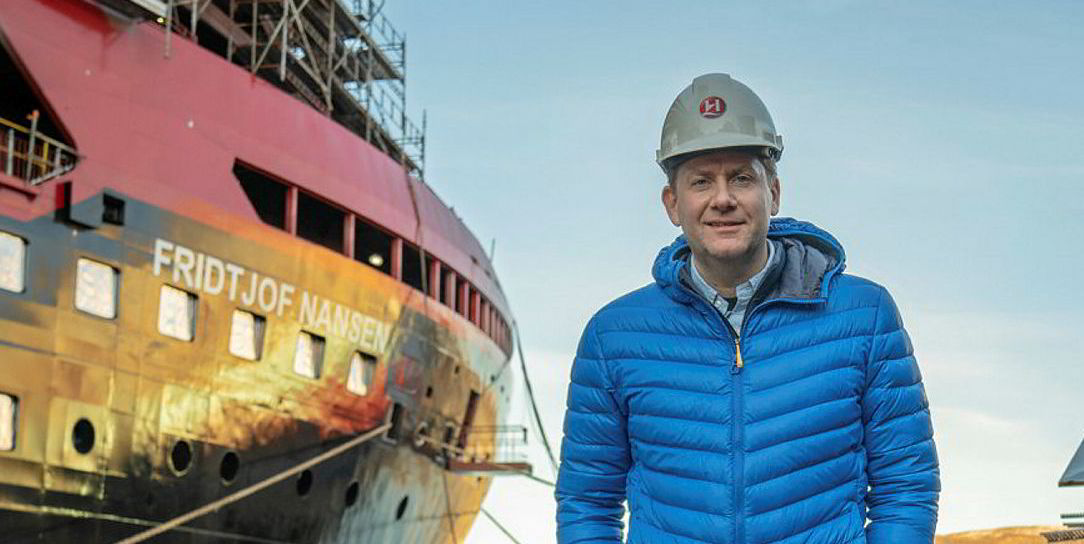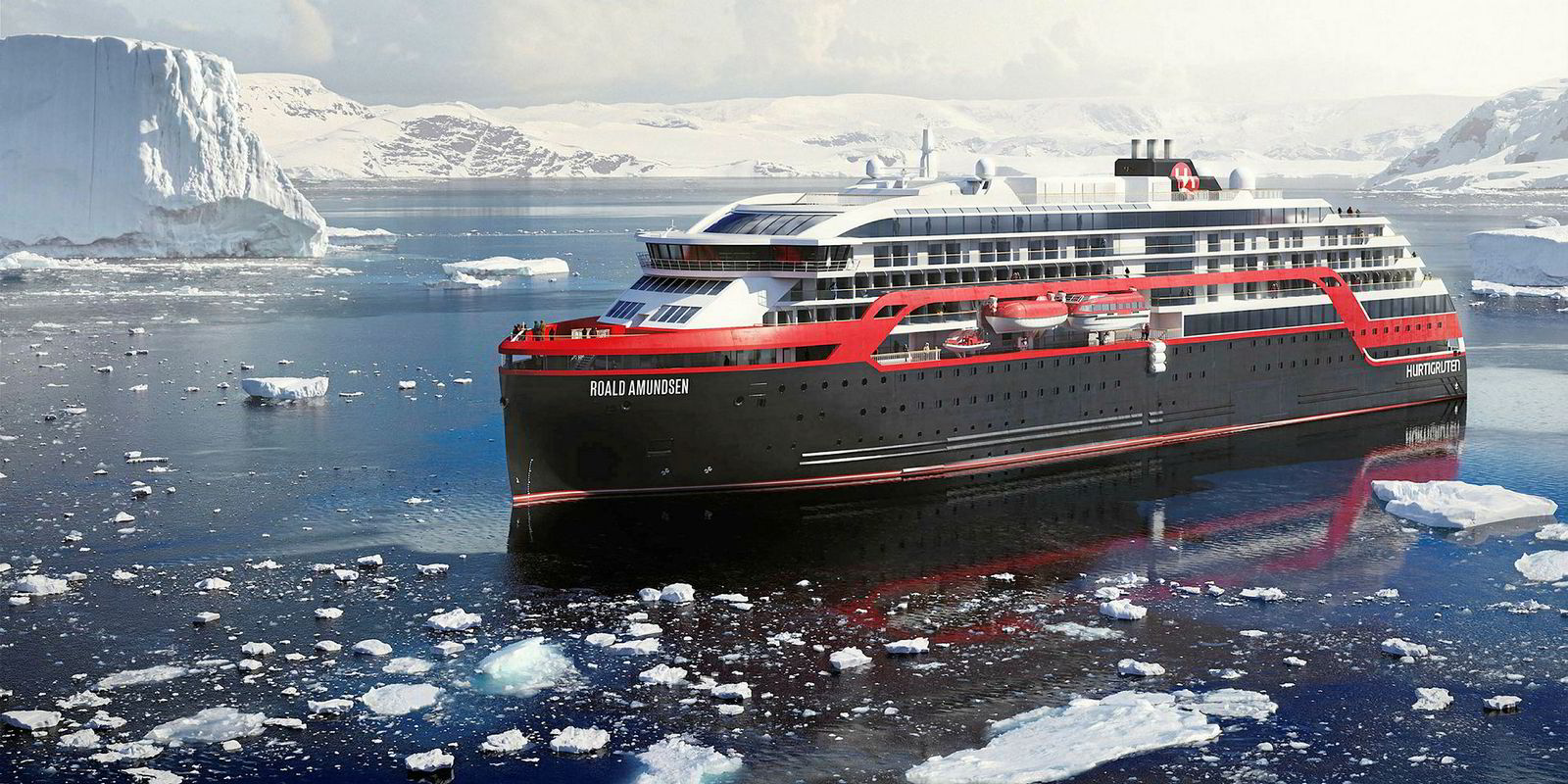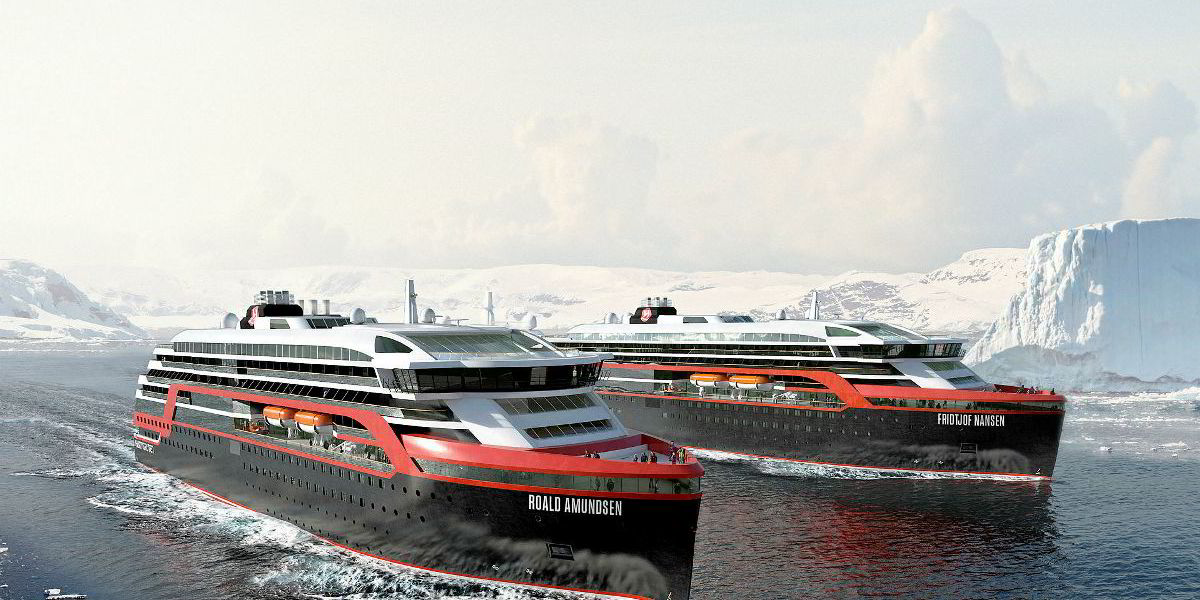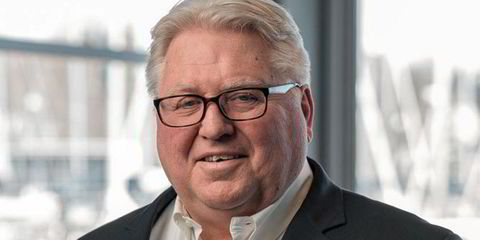When Hurtigruten ordered two state-of-the-art ice-class exploration cruiseships at Kleven Verft in 2017, there was much fanfare about their green credentials.
As the first cruiseships to use an electric propulsion system — a combination of battery and fuel power — the newbuildings were dubbed the “hybrid cars of the seas”.
The Norwegian ferry company is suggesting the 530-passenger Roald Amundsen and Fridtjof Nansen could revolutionise shipping in the same way the Toyota Prius has transformed the car industry.
The newbuilding project is aimed at the fast-growing Antarctic exploration cruise market, so the Hurtigruten pitch has a strong focus on sustainability and environmental protection.
But exactly how revolutionary are the sisterships’ hybrid propulsion systems? Criticism has centred on their heavy use of conventional marine gasoil (MGO) and limited ability to run on battery power.
The wider industry’s move towards cleaner shipping should fit perfectly with the company’s plan to grow the expedition cruise business in the polar regions without damaging the environment.
Hurtigruten field operations manager Karin Strand told a press gathering in December at the Kleven yard in western Norway: “Our goal is to make sure the continent stays exactly the way it is now, because in the Antarctic we are guests.”
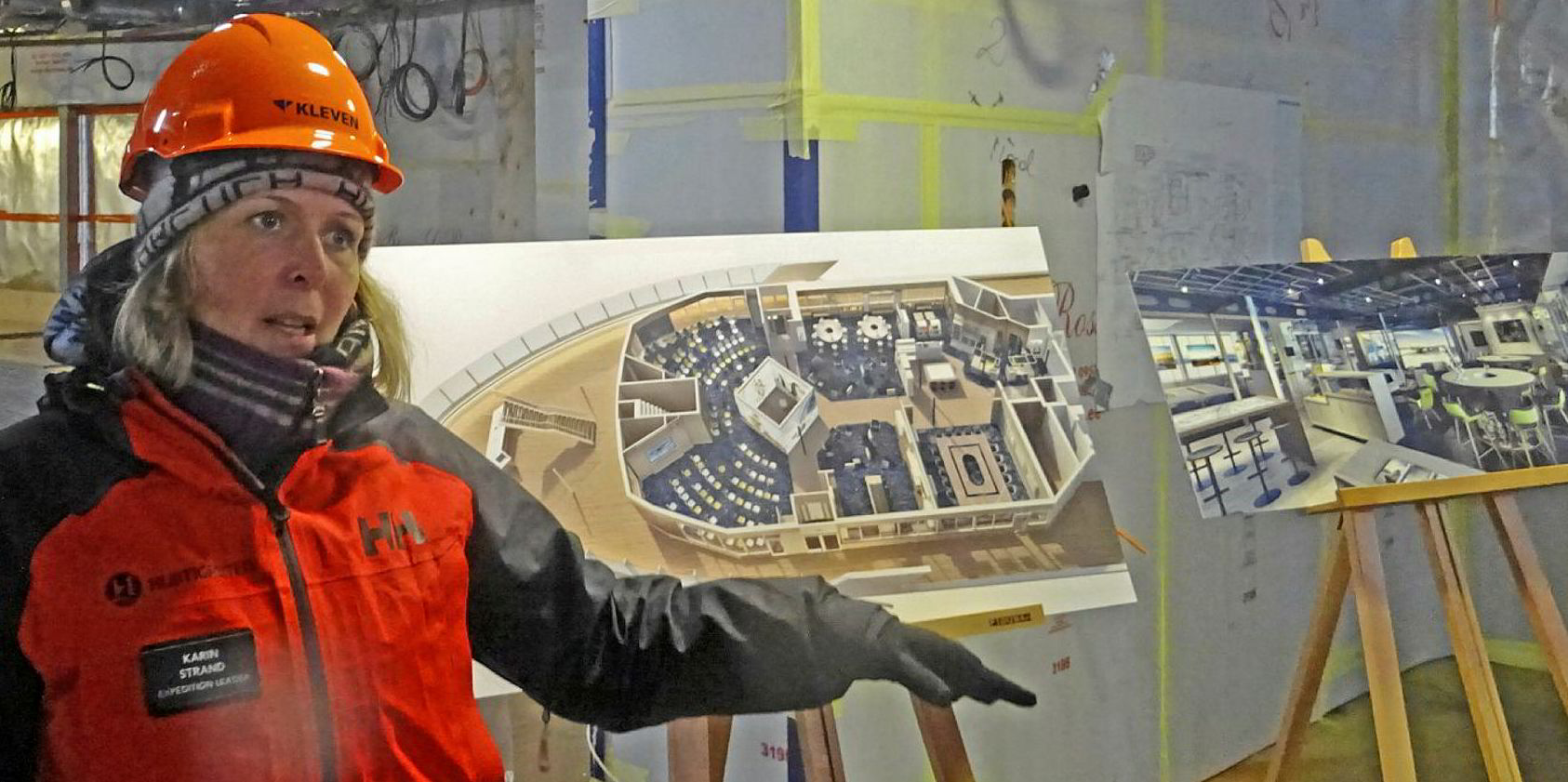
The company has a lot riding on selling shipping’s green dream to consumers.
The newbuilding project is the next stage in the development of the company, which has been expertly managed by energetic and innovative 43-year-old chief executive Daniel Skjeldam.
He was seen as a rising star in the Norwegian business world when he took charge of Hurtigruten in 2012 after making his name in the airline industry.
Skjeldam became the youngest chief executive of a Norwegian-listed company at a time when Hurtigruten was struggling financially.
He helped turn the company round and it is now profitable under new owners, Norwegian investor Petter A Stordalen and British private equity firm TDR Capital, which have delisted the company.

The next stage is geared towards trying to make a niche expedition cruise business out of a strong sense of corporate environmental responsibility.
On the back of that business plan the owners want to refloat the company.
Skjeldam says the ambition is to be at the forefront of shipping’s shift to cleaner fuels. “We want to lead the industry in this change,” he told the press gathering. “Hurtigruten staff are trying to find new technology to make sure we are the most sustainable cruiseship company in the world.”
As part of that plan, it is undertaking a huge conversion project of its existing fleet to LNG and experimenting with combining LNG with biogas to create super-low-emission ships. Its vessels have also been equipped for cold ironing (plugging into mains electricity) while in port.
The company is leading a campaign for a ban on the carriage of heavy fuel oil in the polar regions. Its newbuilding exploration ships will include a science centre that will conduct observation and experiments in the Antarctic to help understand climate change.
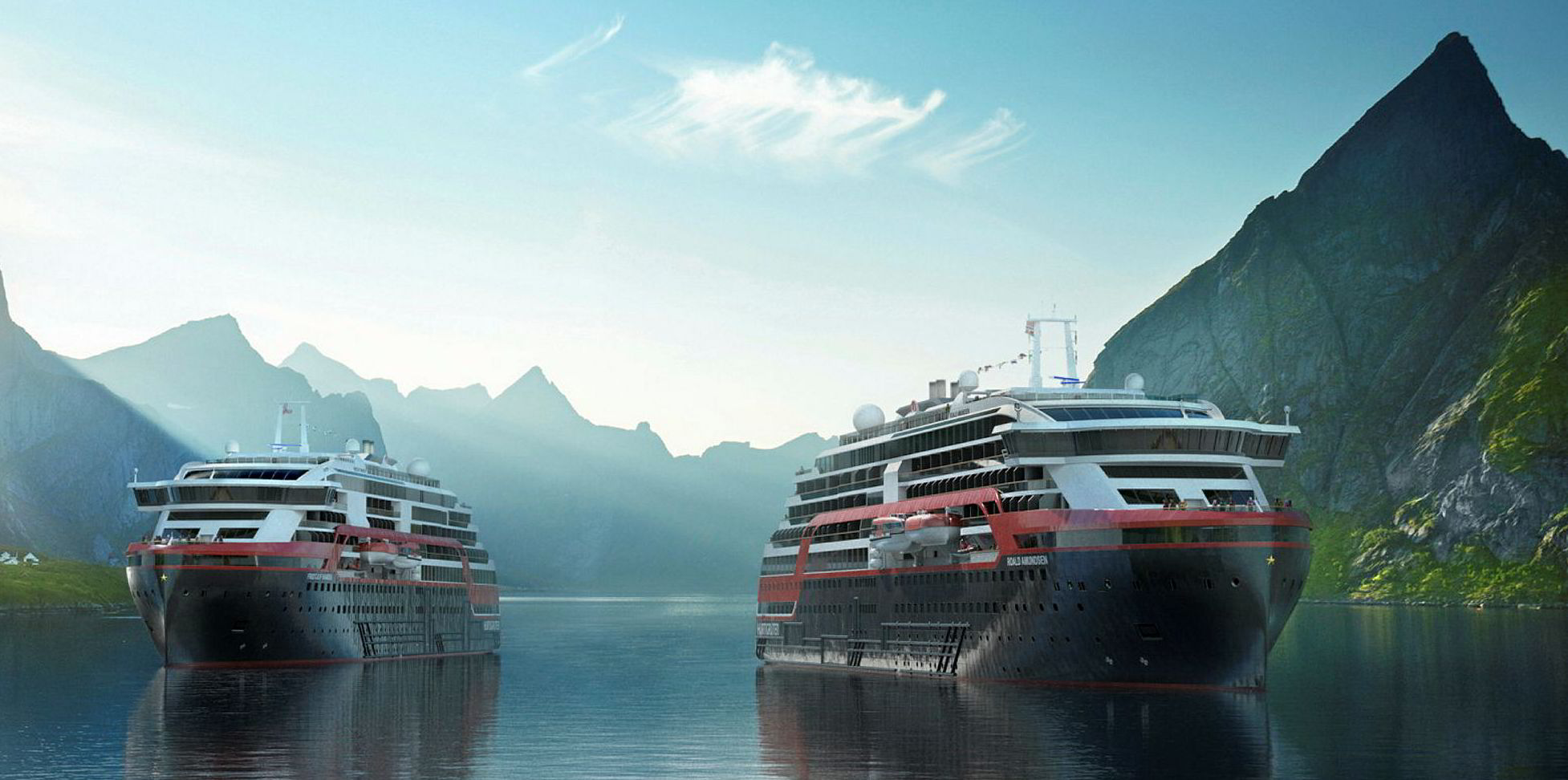
Passengers and crew are even encouraged to pick up and bring back onboard any litter they find in the region, while single-use plastic has been banned.
However, the newbuilding project did not get off to the best of starts when a Norwegian newspaper reported that the ships had design faults that forced Kleven to rebuild the upper deck structures. The suggestion was that by going to a designer, Rolls-Royce, and a shipyard that are not passengership specialists, Hurtigruten’s vessels had run into problems.
The reports were strongly denied but, despite a retraction by the paper, it was a setback for the PR team’s marketing efforts. Things were not helped when financial difficulties at Kleven forced Hurtigruten to take over the yard and the ships were severely delayed.
Another question that it has had to tackle is, if LNG and biogas is considered the best option for the existing fleet, why has it not been adopted by the Kleven newbuildings? Skjeldam’s answer is simple: There are no LNG supply facilities in the Antarctic and at this stage the company has no option.
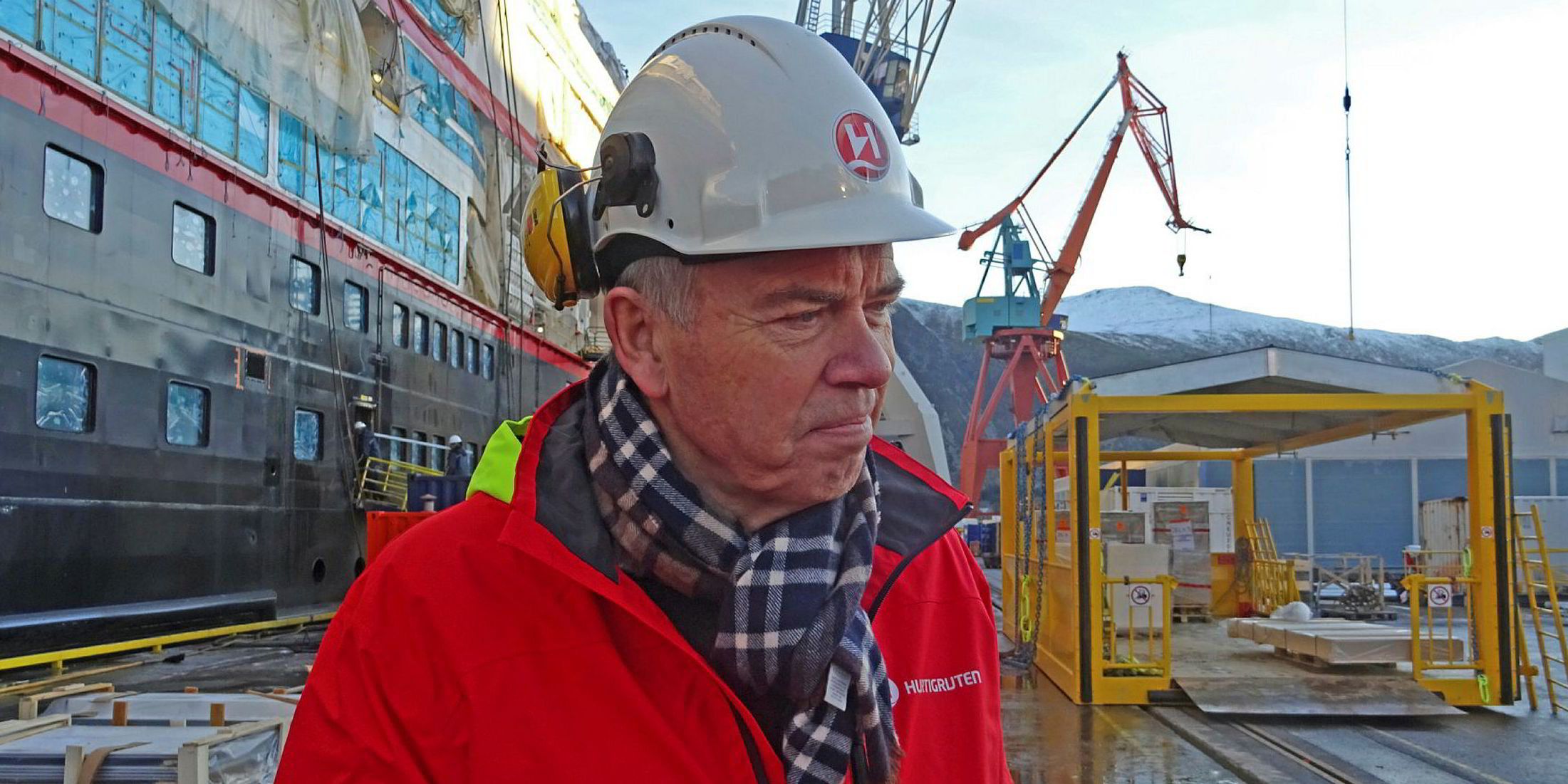
Instead, it has had to take up its second choice — a hybrid electrical propulsion system.
Yet the Ice Class PC-6 newbuildings will run on conventional MGO, as many ships do in near-shore operations. Although it has lower sulphur oxide and nitrogen oxide emissions than heavy fuel oil, and is cleaner and lighter, there is nothing remarkable about using MGO.
The battery capacity onboard is also limited. Hurtigruten admits battery technology is still not at a stage at which it can take take full advantage of the hybrid propulsion system. The current capacity is not enough to operate the ships purely on emission-free battery power.
Instead, Tor Geir Engbretsen, senior vice president of maritime operations, says the scope is available to expand the battery capacity fivefold, but the company will wait for the technology to develop further and for prices to fall before it expands to that level.

Engbretsen is not sure when the technology and price might reach a level at which Hurtigruten will judge the time is right to make the investment. That uncertainty is a big unknown hanging over the project’s environmental credentials.
The hybrid system is based on peak-shaving: battery power kicks in when required by the vessel’s propulsion demands. Fuel efficiency and CO2 emissions savings of 20% are being suggested by Hurtigruten, without indicating the method of comparison.
Others suggest that at current capacity the gains may be smaller than Hurtigruten is estimating, and at a level that could be achieved through existing technologies such as optimising hull form and propulsion systems.
Hurtigruten’s own figures show its LNG conversion project of the existing fleet has achieved a 25% reduction in CO2 emissions compared with the 20% reduction in the newbuildings.
But the company is insistent the Roald Amundsen and Fridtjof Nansen (named after Norwegian polar explorers) have the potential to revolutionise the industry. A third vessel in the series ordered at Kleven last year is using the same hybrid system and Engbretsen says the company can take the technology forward.
“We need to have sustainability as our main goal. We want to challenge the industry and lead by example,” he adds.
